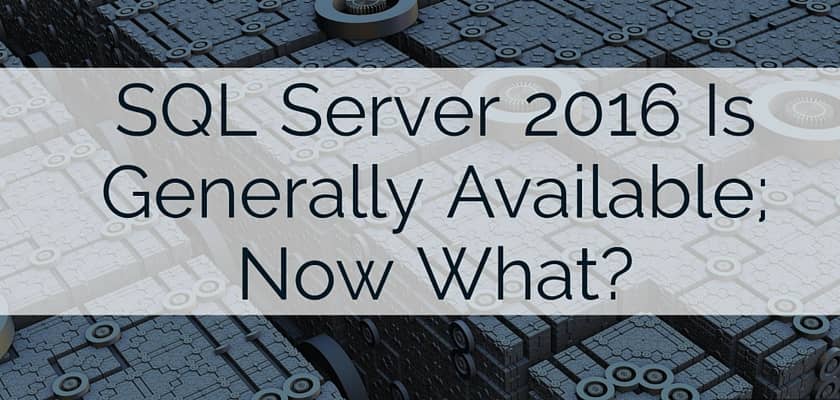On June 1st, Microsoft announced the general availability of SQL Server 2016, which it called the world’s fastest and most price-performant database for HTAP (Hybrid Transactional and Analytical Processing) with updateable, in-memory columnstores and advanced analytics through deep integration with R Services. This product announcement is more significant than most other product announcements because just less than two months earlier, Microsoft announced the end of support — including security updates — for SQL Server 2005.
If history is any indication of the significance of this announcement, then look no further than Windows Server 2003, which had its end of support in April 2015, and is still present in 60% of companies, despite no support or updates and multiple security issues. IDC estimated 800,000 servers are still running SQL Server 2005, which means there are a lot of organizations at risk, and missing out on substantial performance improvements and new capabilities.

The threat environment is bad, and seems to be getting worse. According to multiple reports, the majority of all cyber-attacks involve financial or espionage motivations, and data breaches will affect hundreds of millions of people in the near future. Protecting your data, especially your data that identifies your customers and prospects, is not only critical, but can mean the difference between losing customers, and losing your business.
Having the most up-to-date security may be the biggest reason to migrate to a newer version of SQL, but the sweeping technology advances — cloud, mobility, social, big data, analysis — and business changes that have transformed today’s work environment, including explosive data growth, new data types, and new demands are just as compelling. Between computers, tablets, smart phones and sensors, there are already billions of things connected globally, and the Internet of Things (IoT) and Internet of Everything (IoE) are only going to get bigger.
More information means more data, and more ways of making use of that data. So you can add Big Data and analytics to the mix. They’ll also be an increasingly more vital part of the mix, as making the right decisions, at the right times, will not only separate the winners from the losers, but the survivors from those companies that can’t keep up with the competition.
Want more reasons to upgrade? According to a Microsoft commissioned study, upgrading to SQL Server 2012 or 2014 provides a 113% ROI, with benefits and cost savings including: user productivity and error reductions; IT resource productivity and support reductions; profit from direct and sales-led revenue; customer churn cost savings; cost reductions of improved security; and annual software and hardware savings. So it stands to reason that migrating to the latest version, SQL Server 2016, can pay even bigger dividends.
The arguments for upgrading are compelling, and Microsoft and its partner ecosystem have made it a lot less difficult to migrate. Migrating should start with the following four steps:
- Discover which applications and workloads are running on Windows Server 2005 today, and whether a server refresh is also in order;
- Assess your infrastructure and categorize applications and workloads by type, importance, and degree of complexity; depending upon which SQL path you choose, have your migration team take the appropriate upgrade course to accelerate certifications in the skills required to maintain the replacement DBMS; you should also consider architectural options for the migration to determine if database or server consolidations are in order;
- Target: prior to taking the third step, you should test drive your replacement to familiarize yourself with its capabilities; once you’re comfortable with it, target a migration destination for each application and workload upon migration; and,
- Migrate: officially migrate from Windows Server 2005, either building your migration plan internally or together with a partner.
We increasingly live in a data-driven economy. Having a modern DBMS may not be the most important tool to have, but it is certainly one of the most critical to ensure you address both the existing and emerging business needs, and the time to upgrade to one is now.


